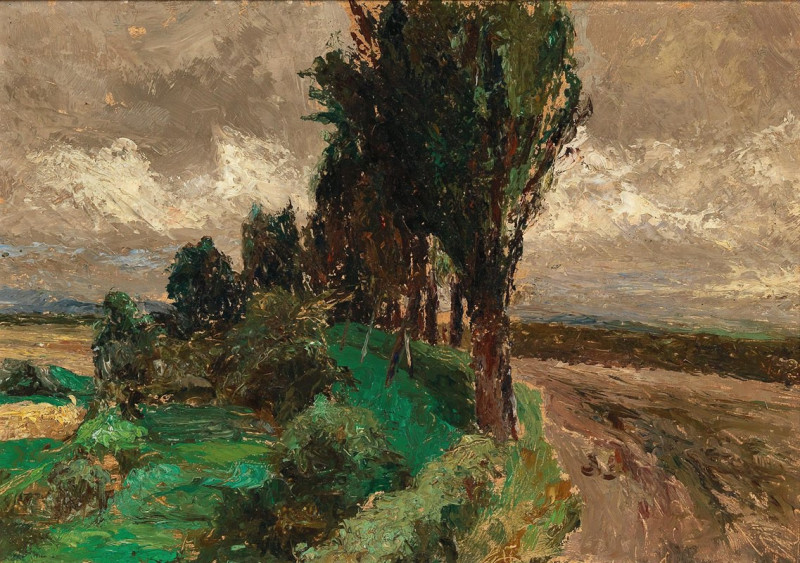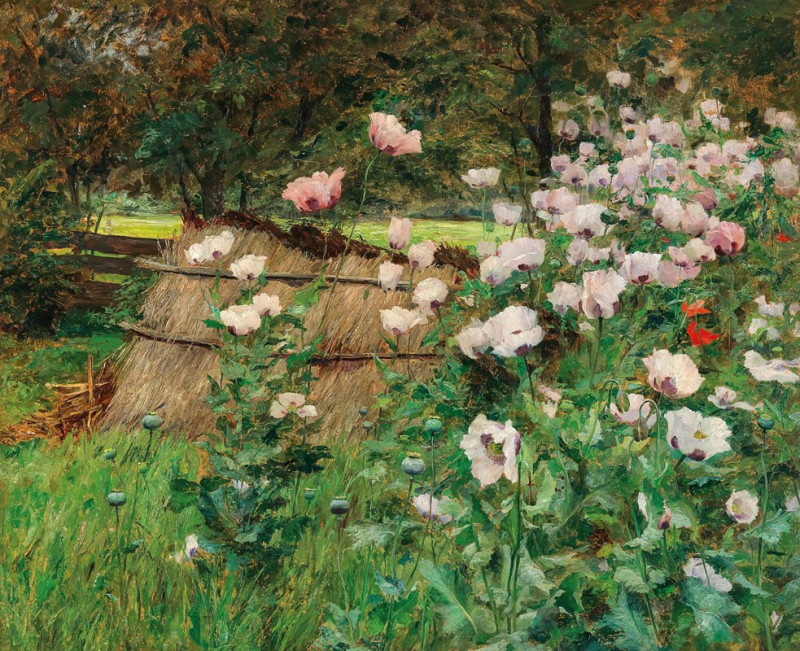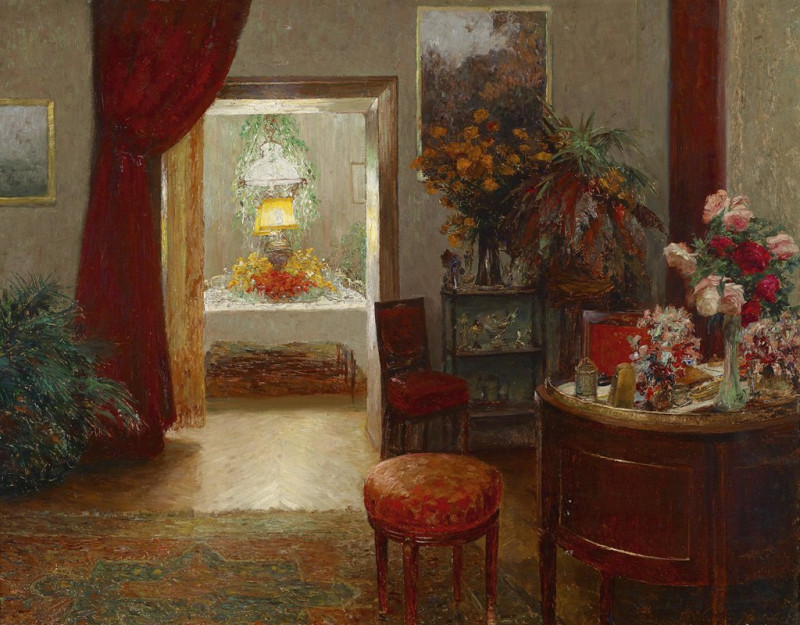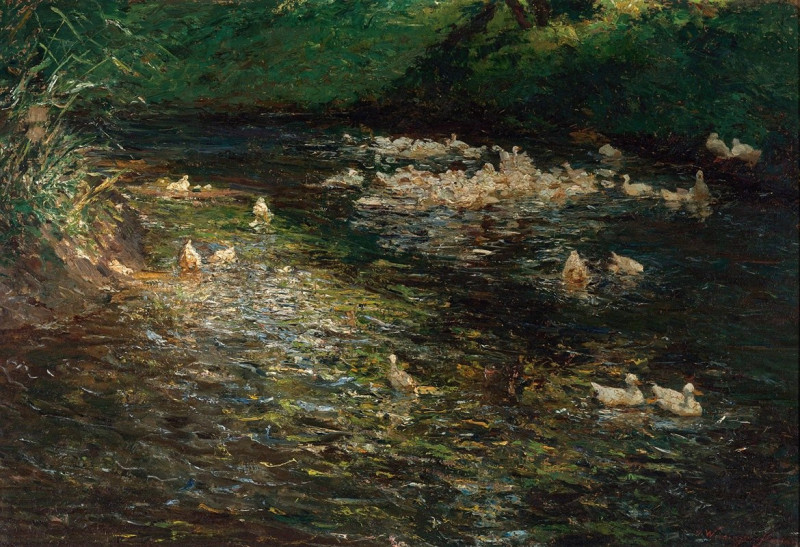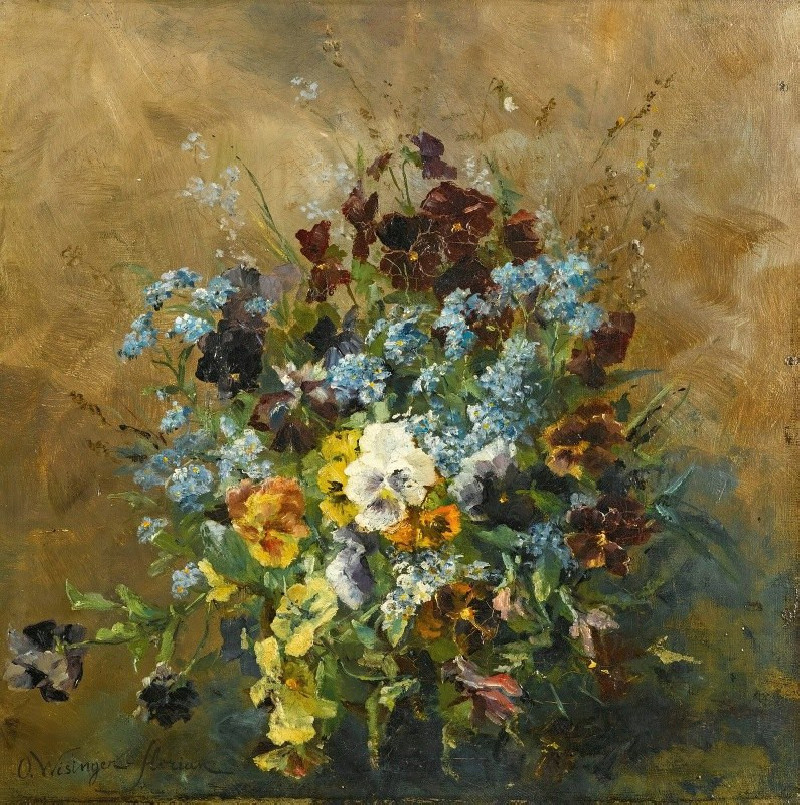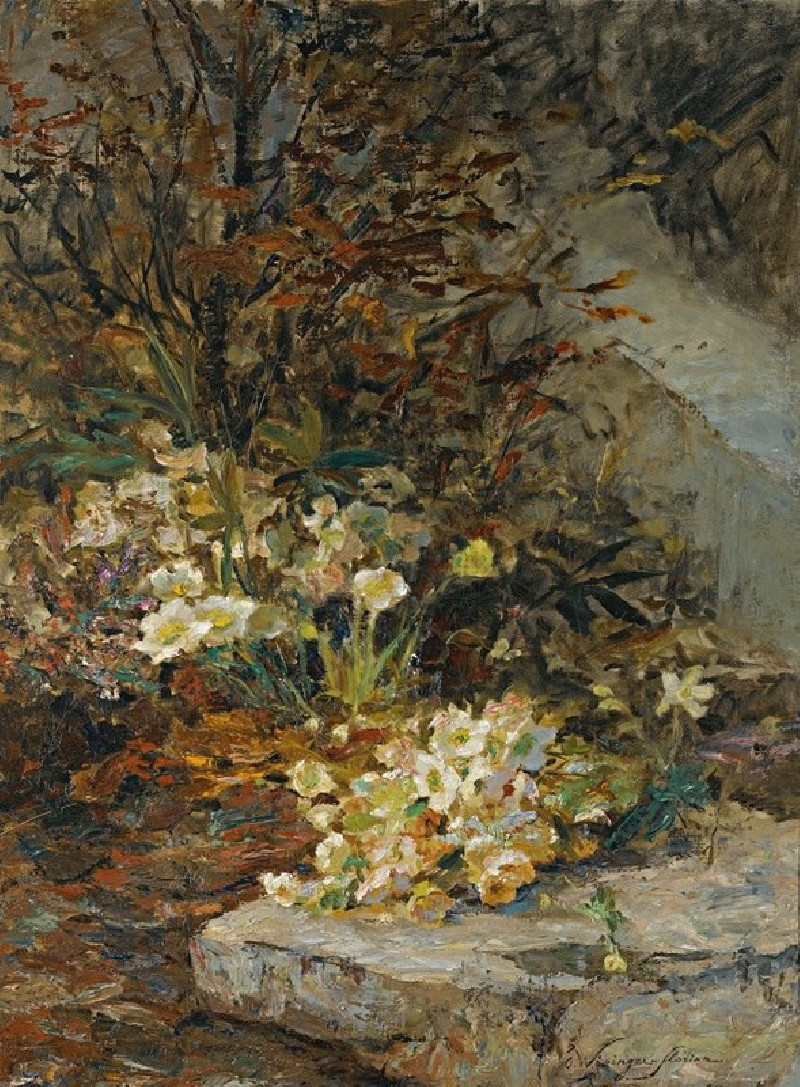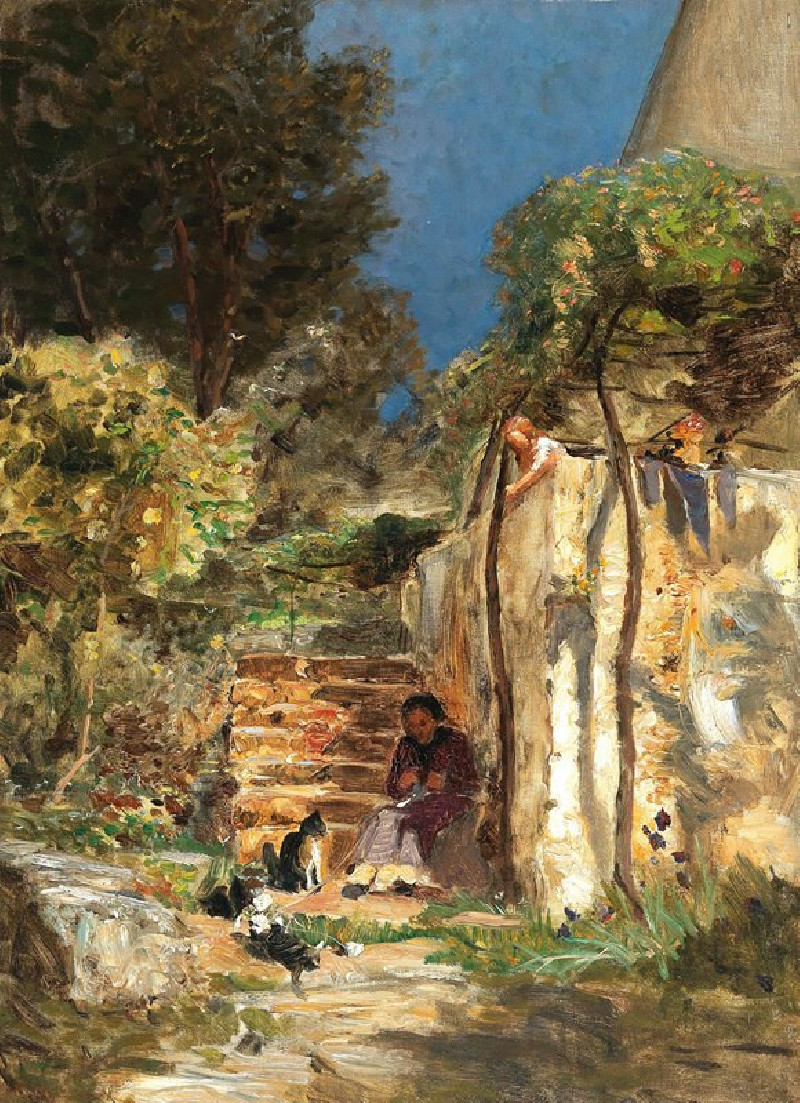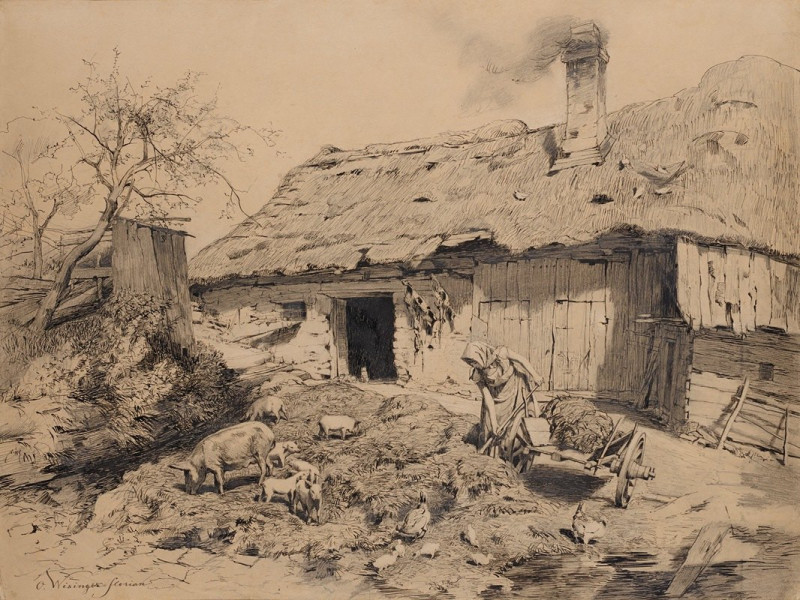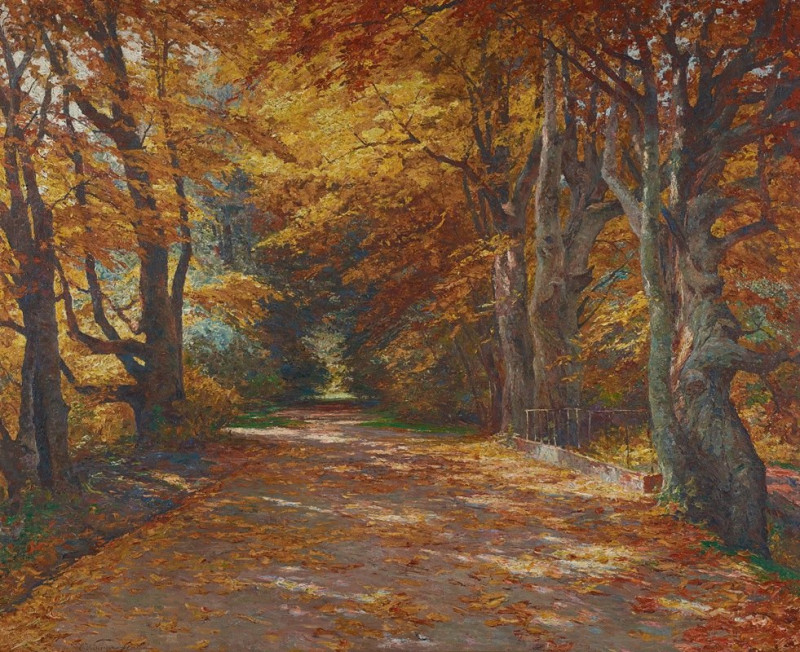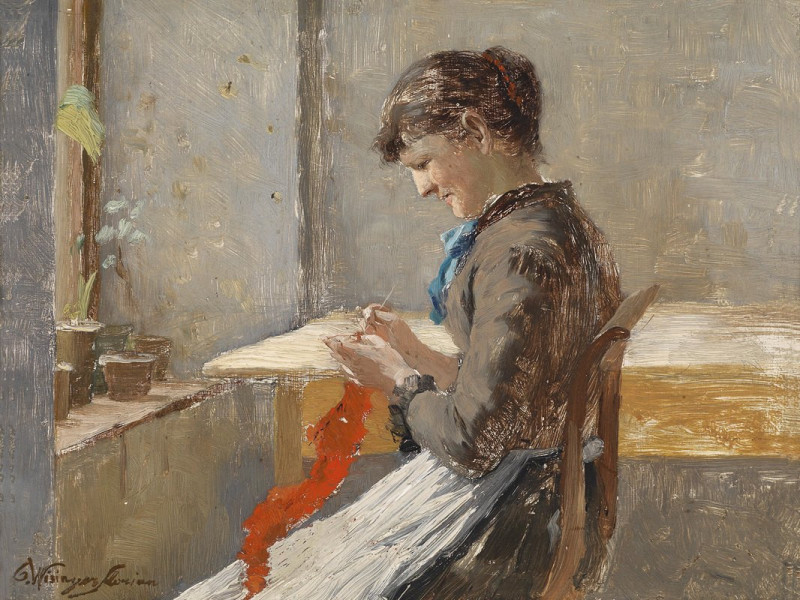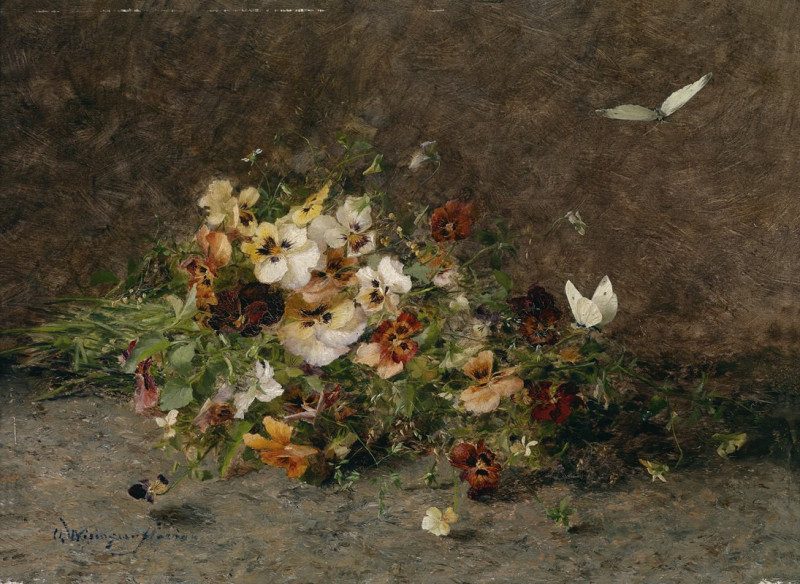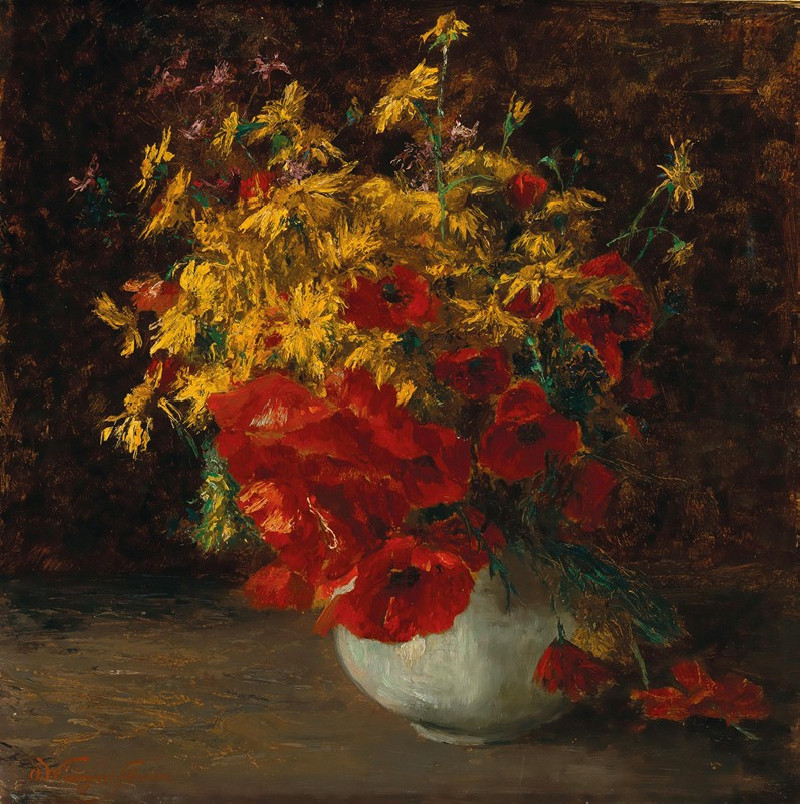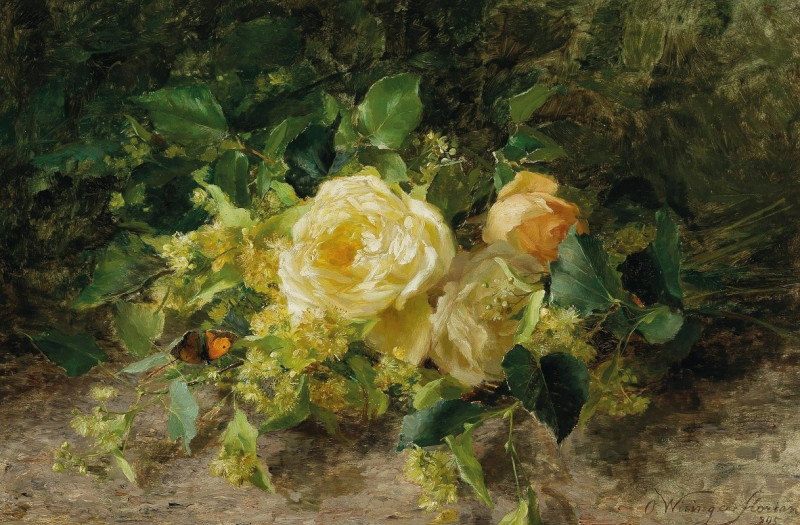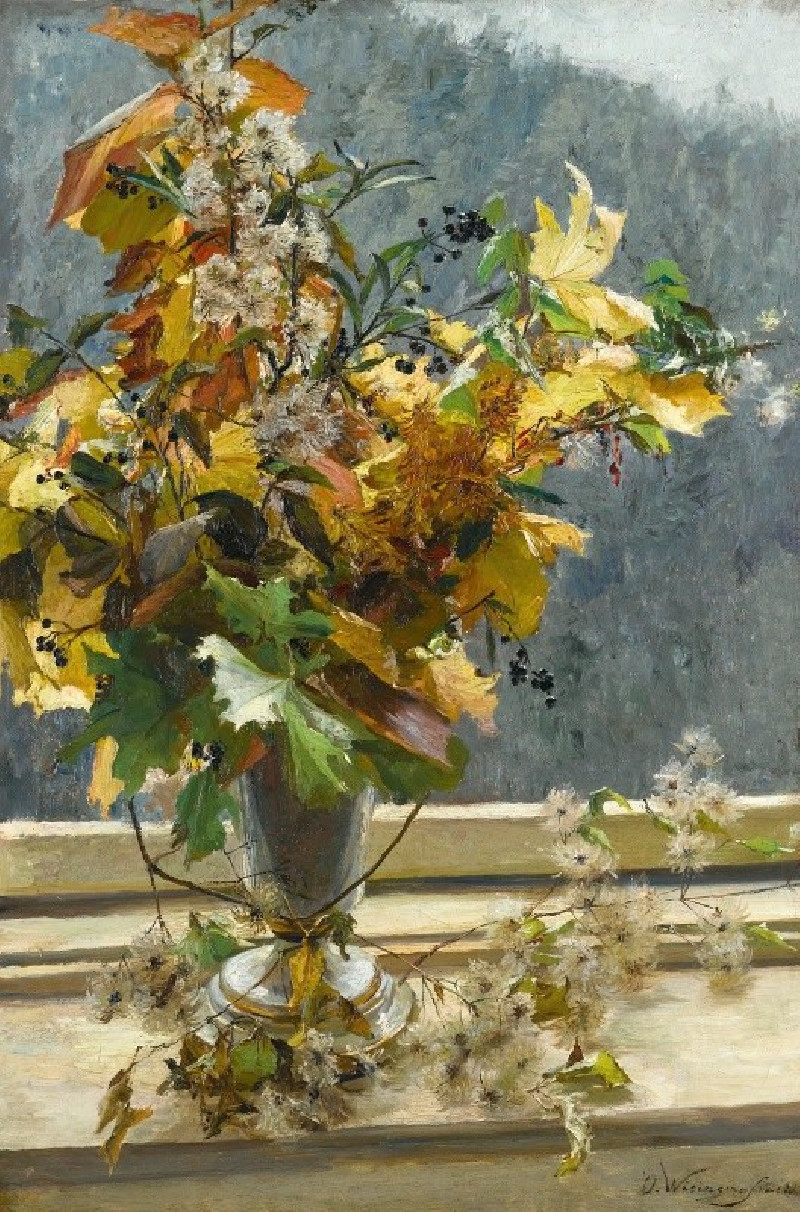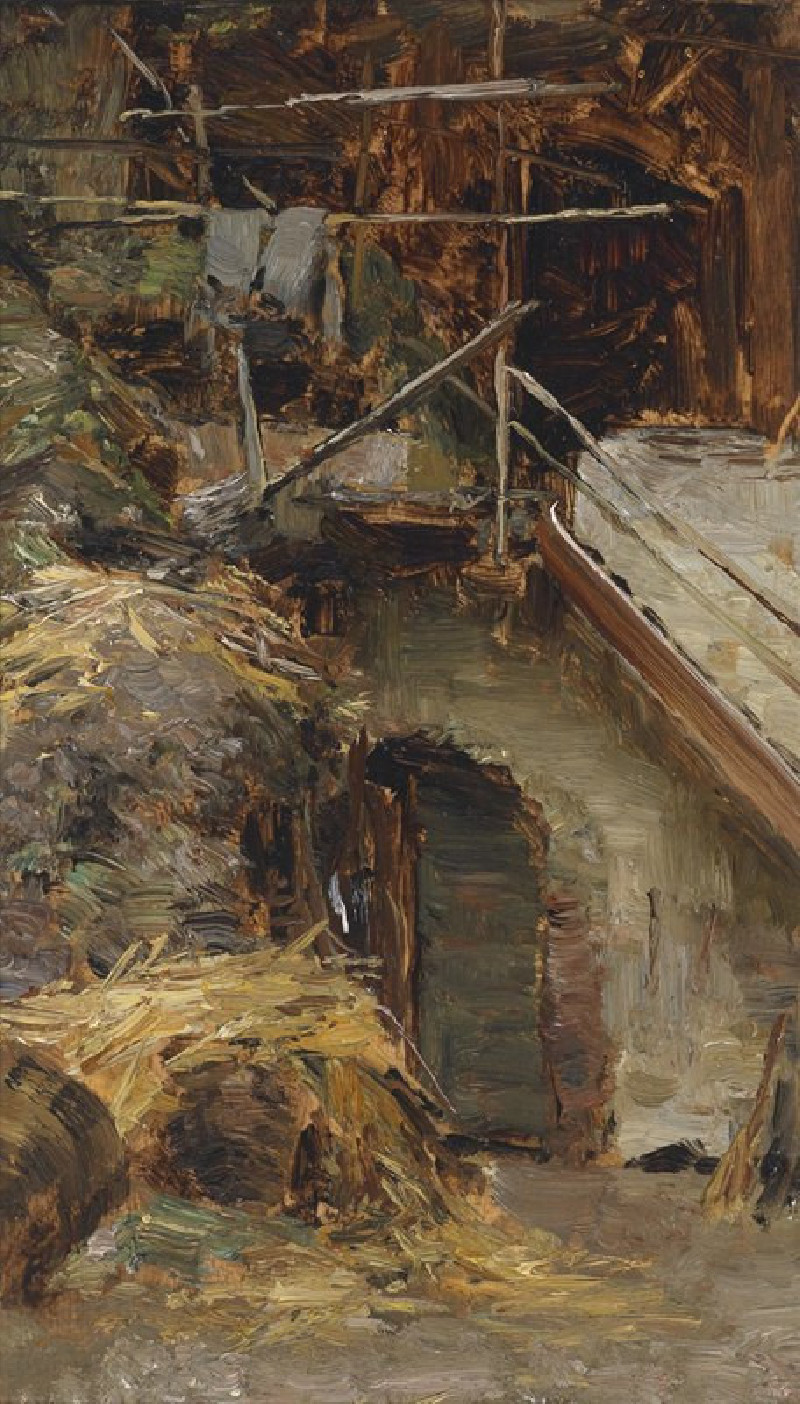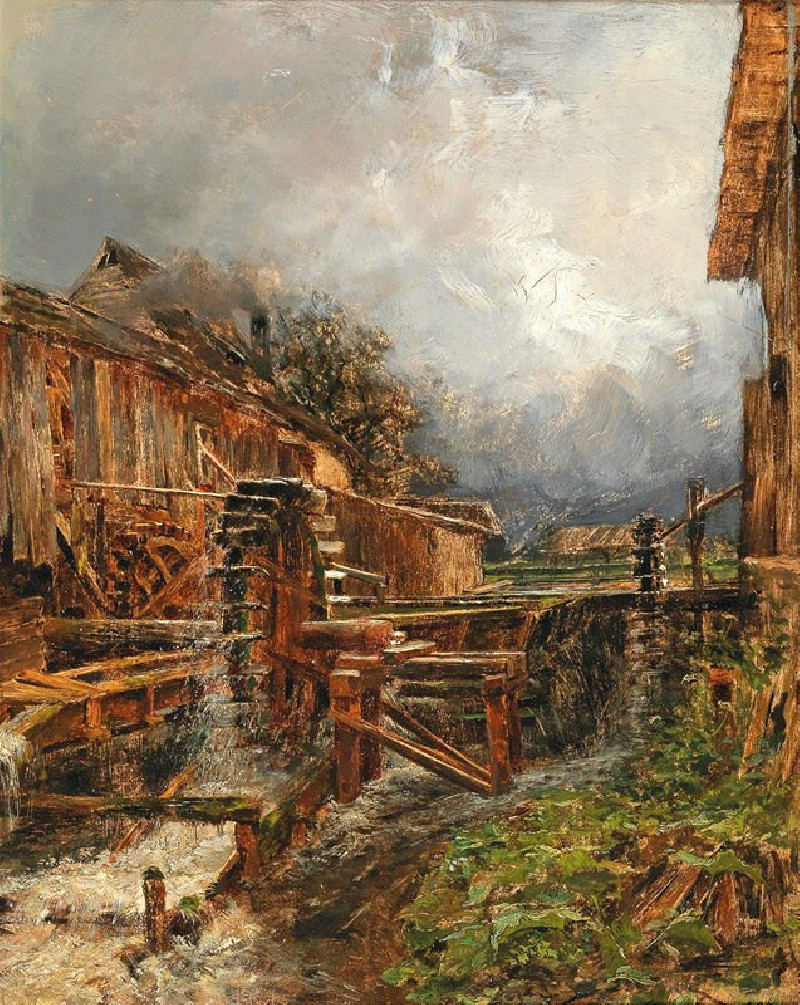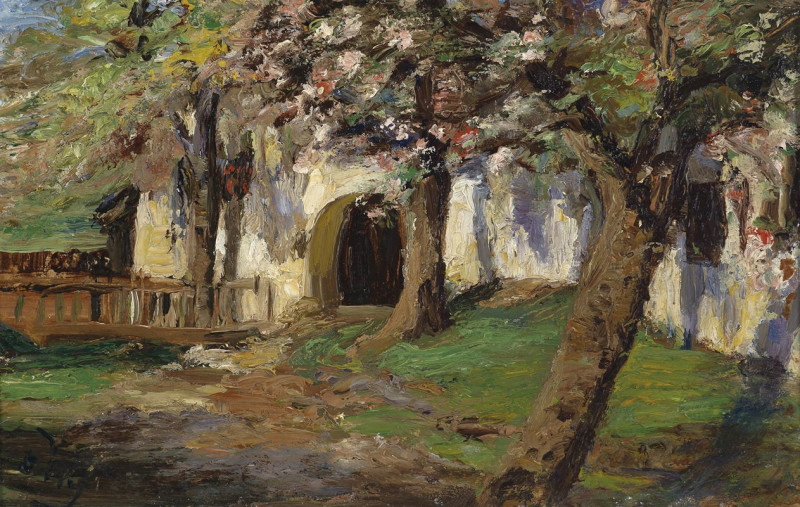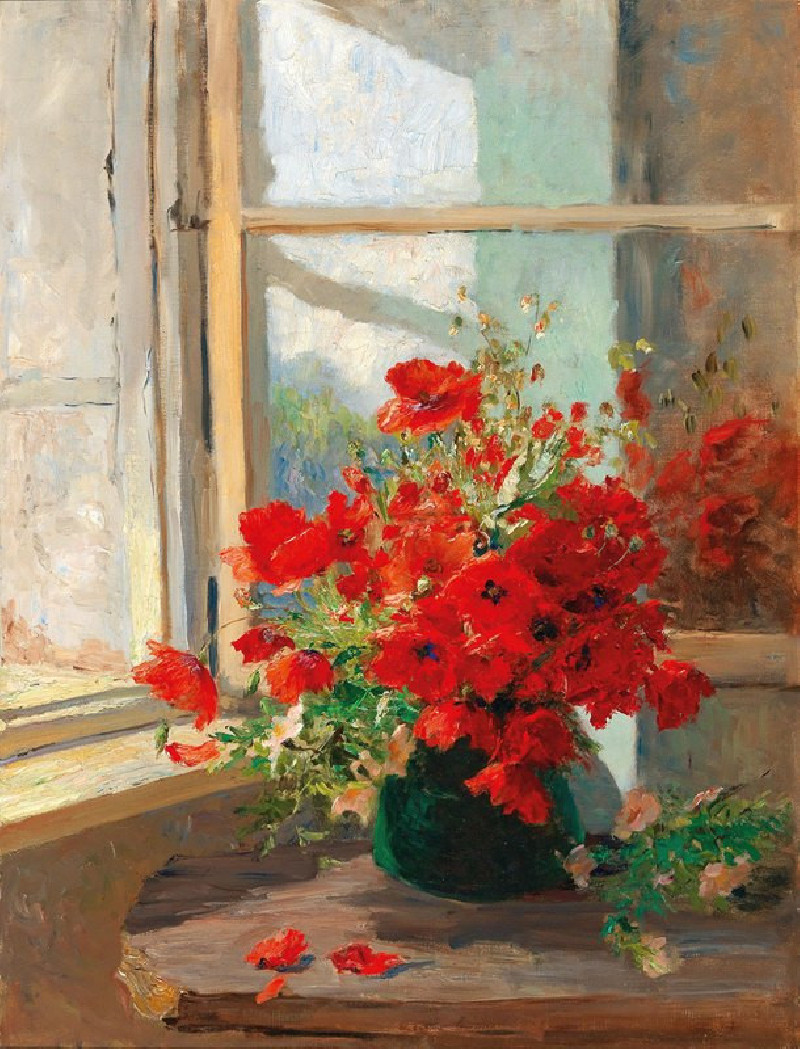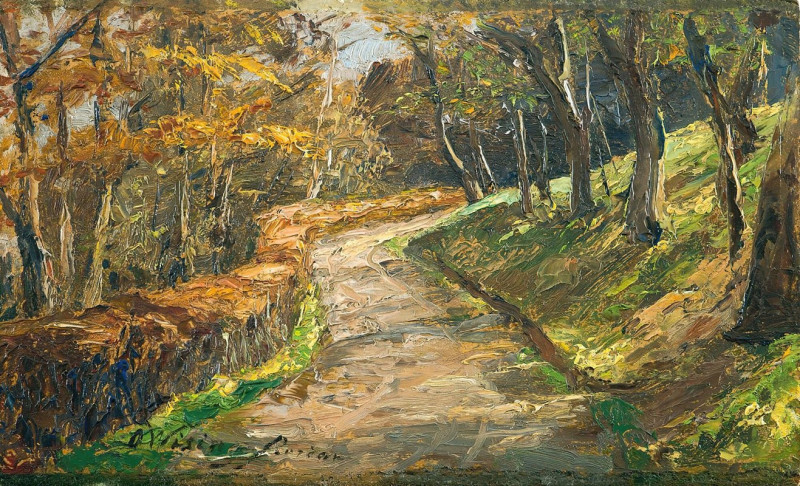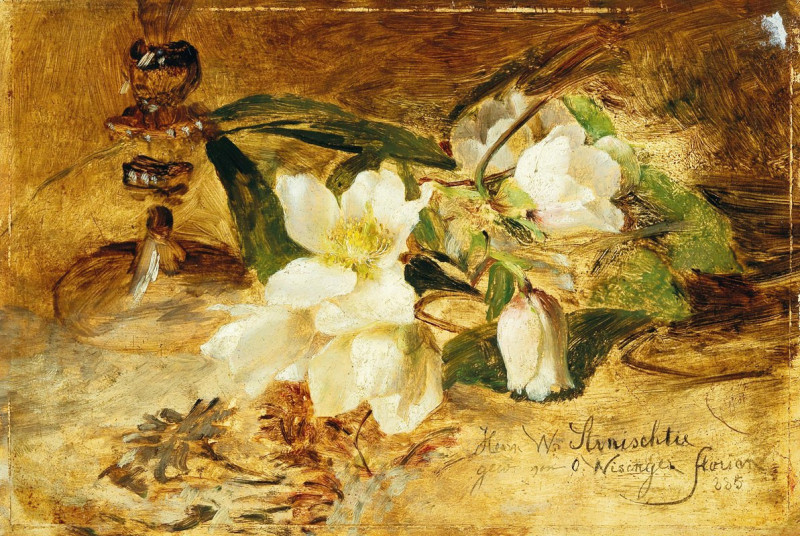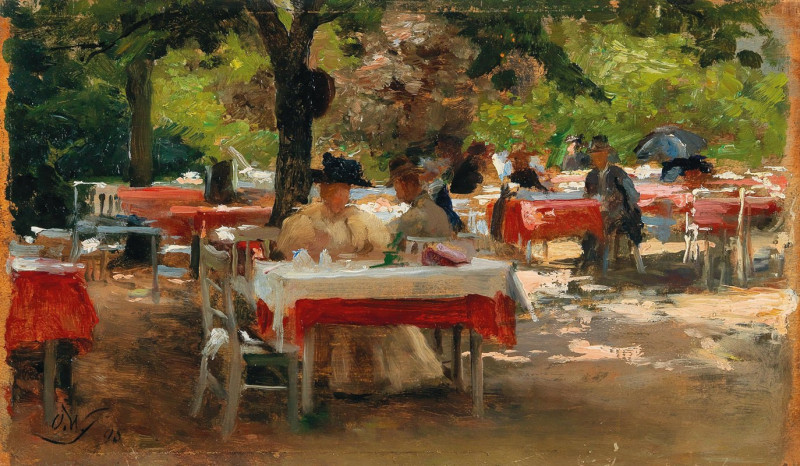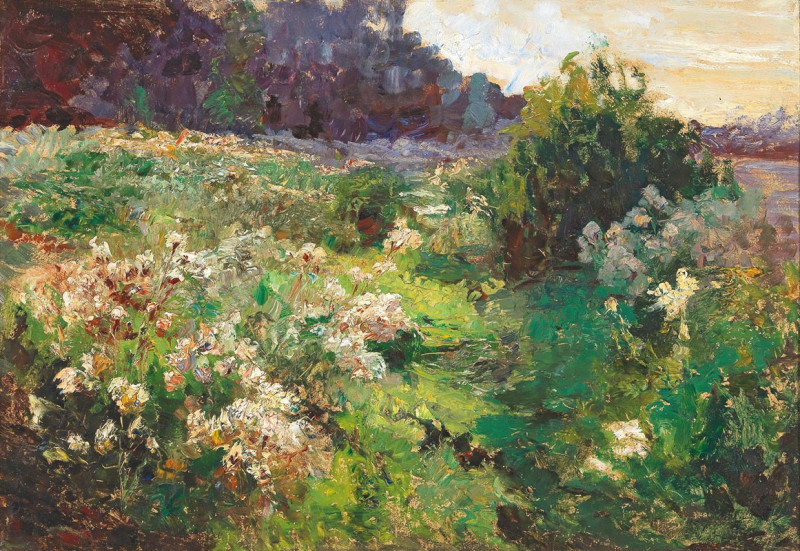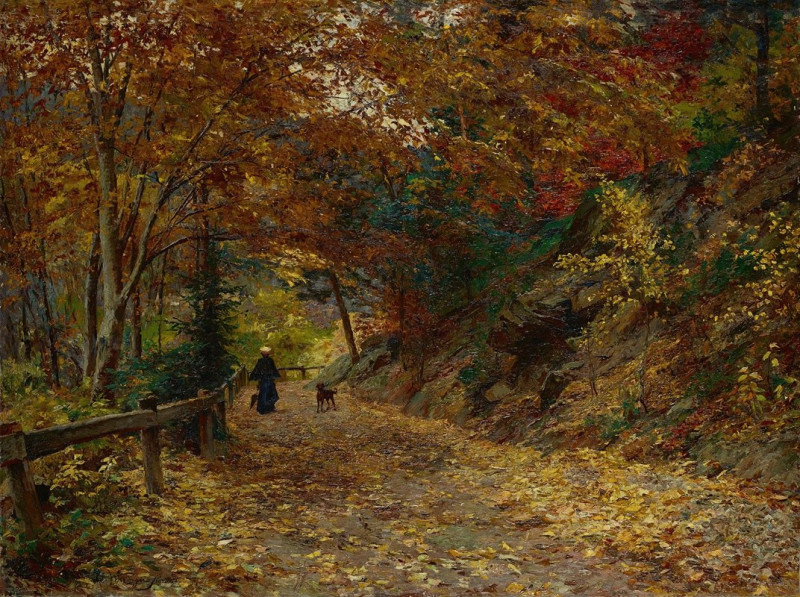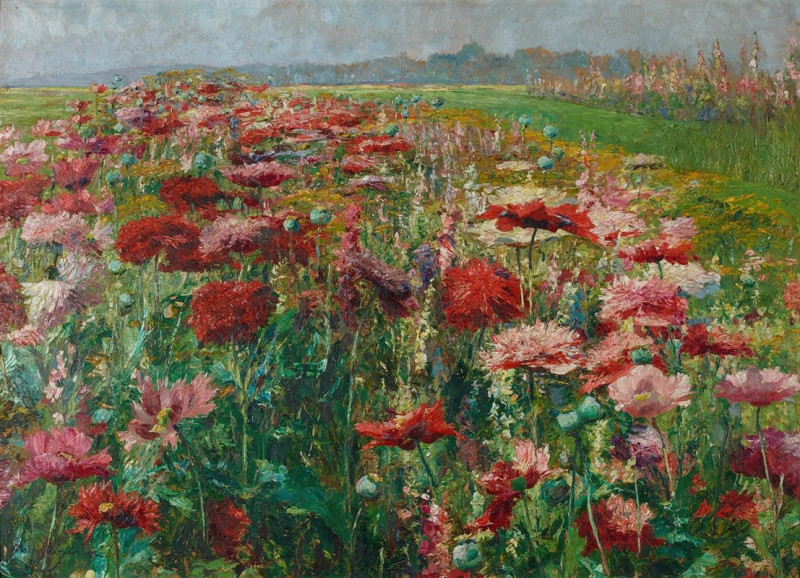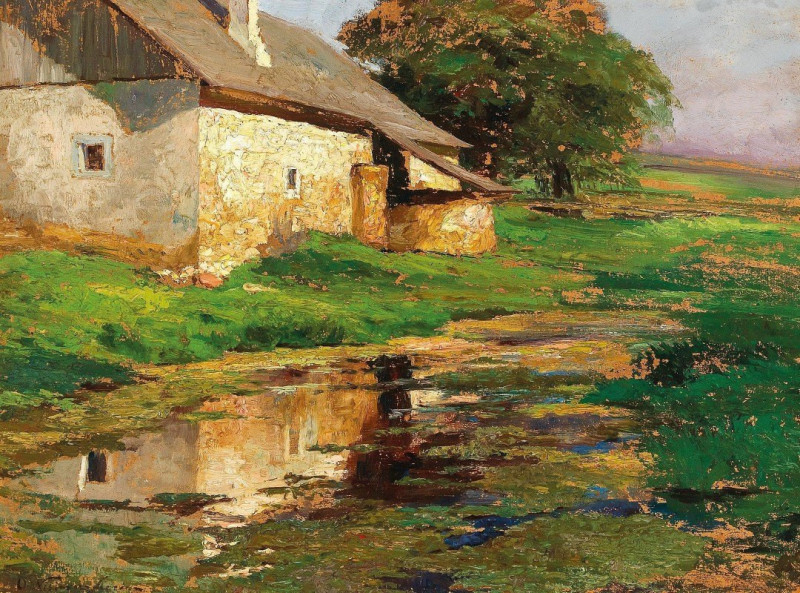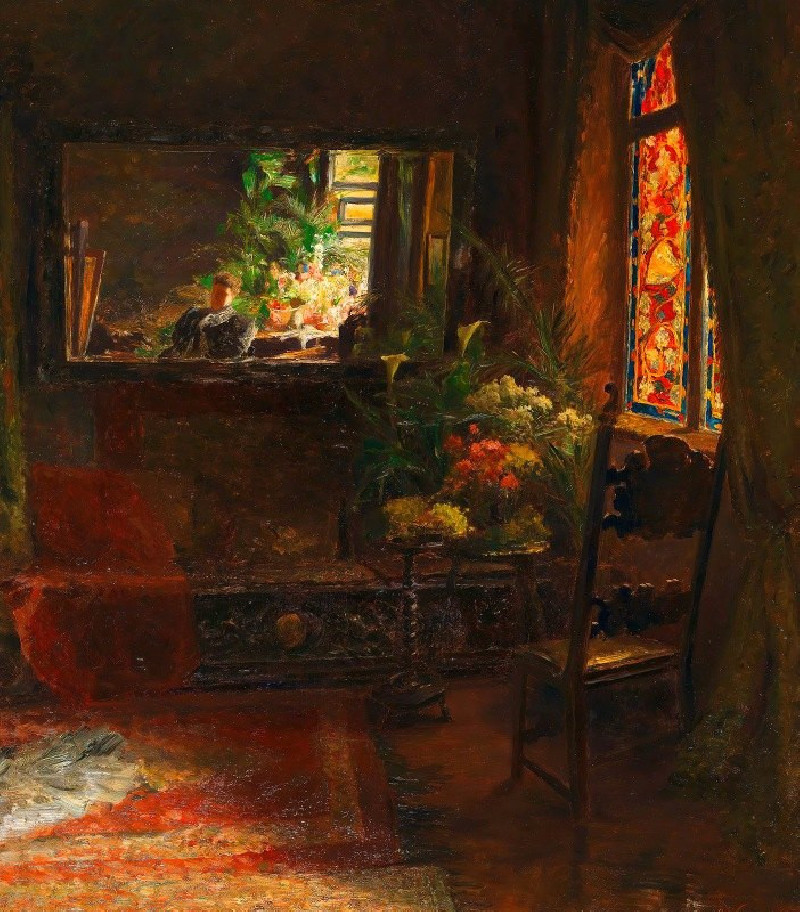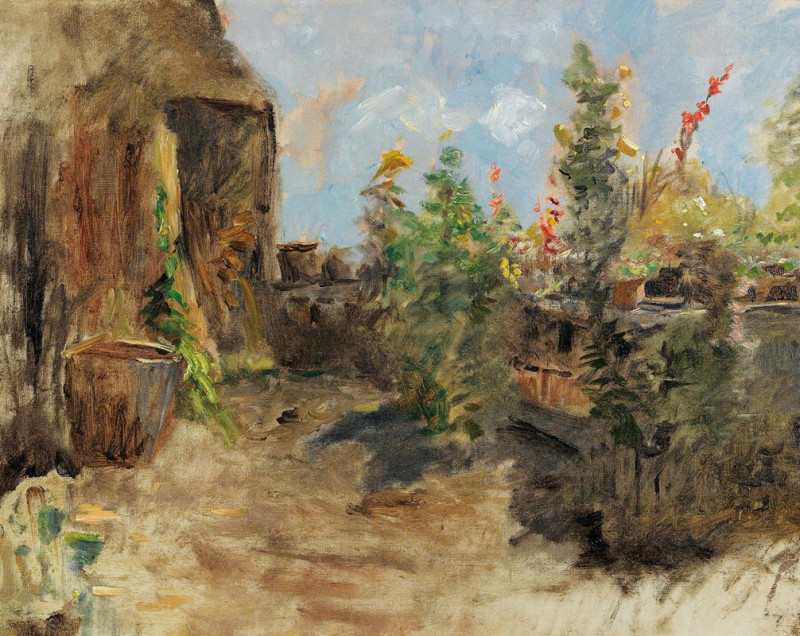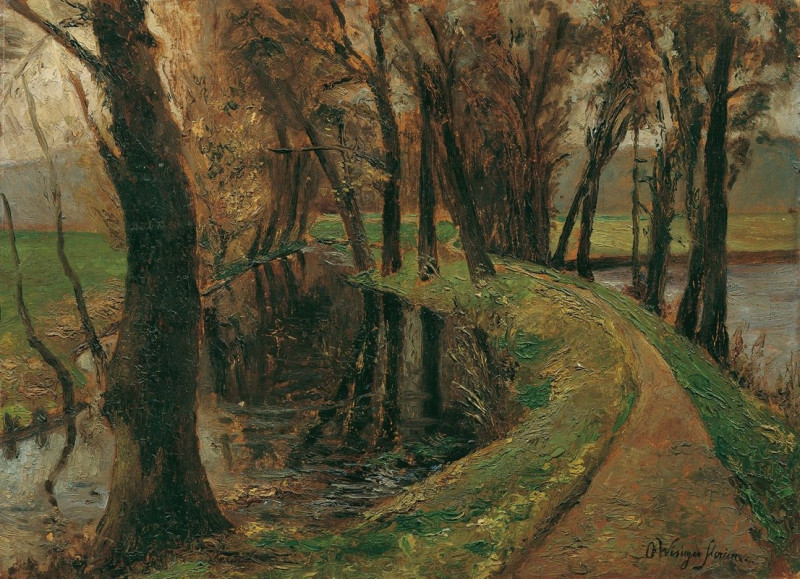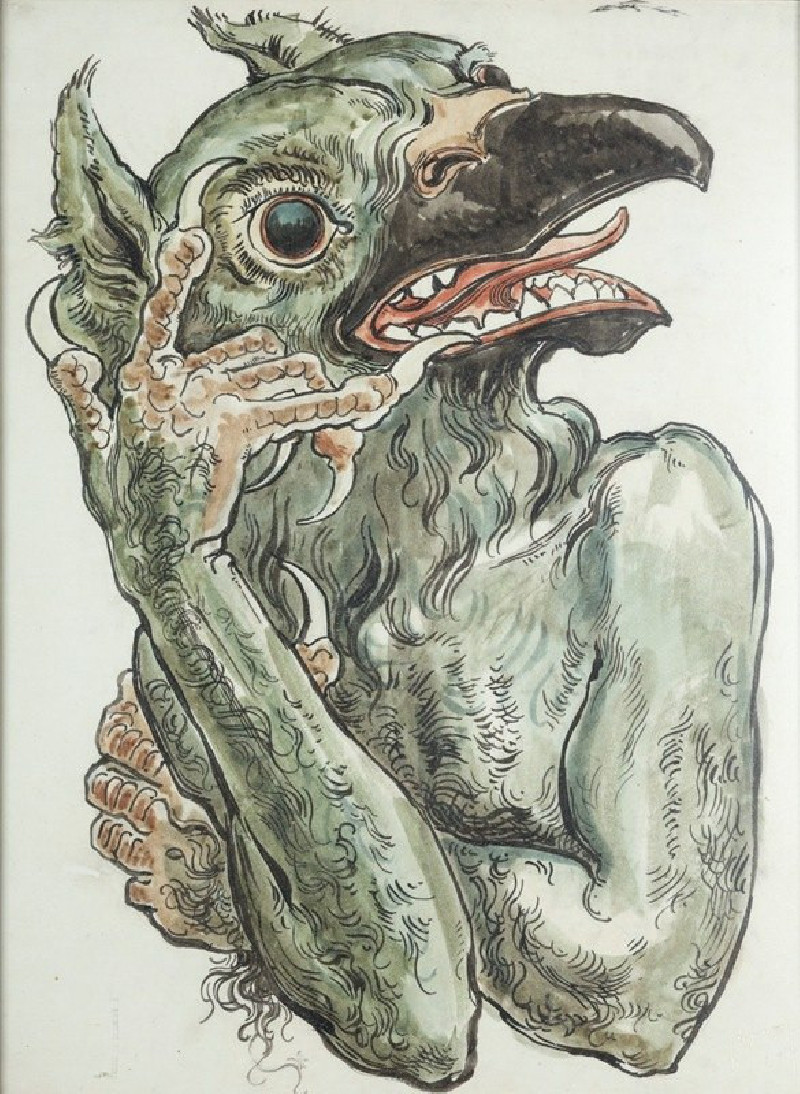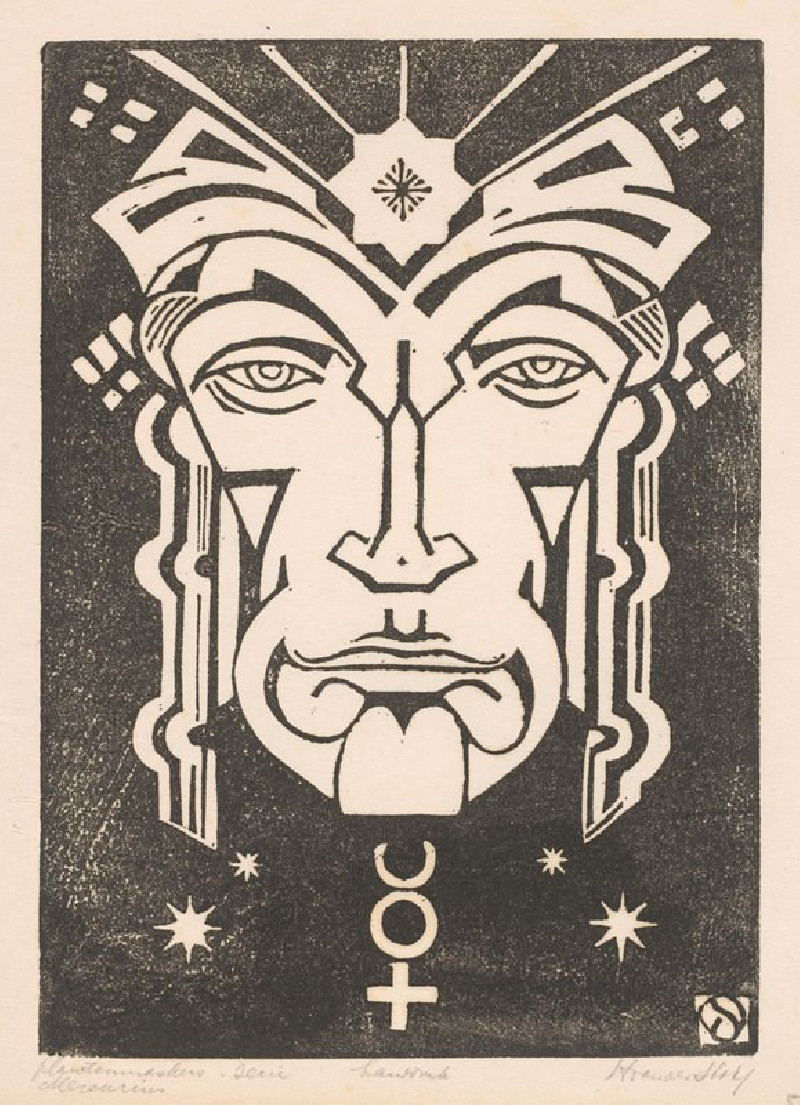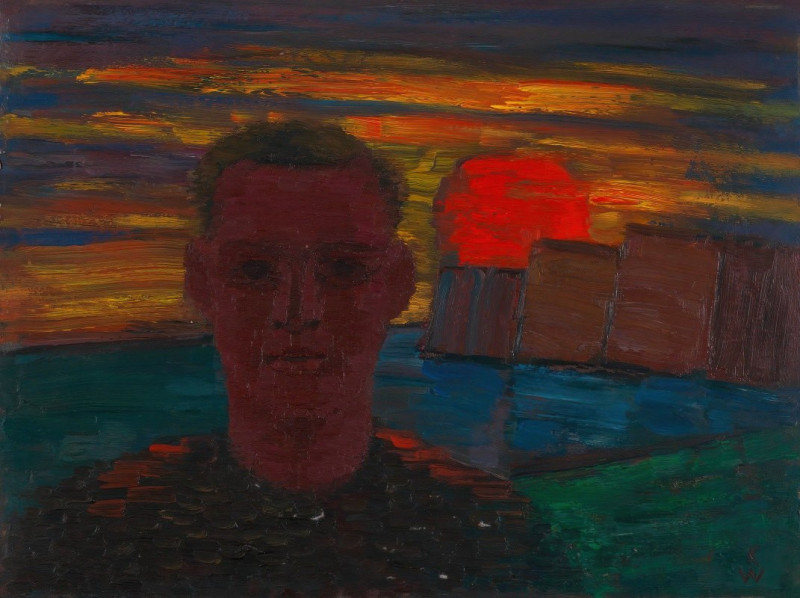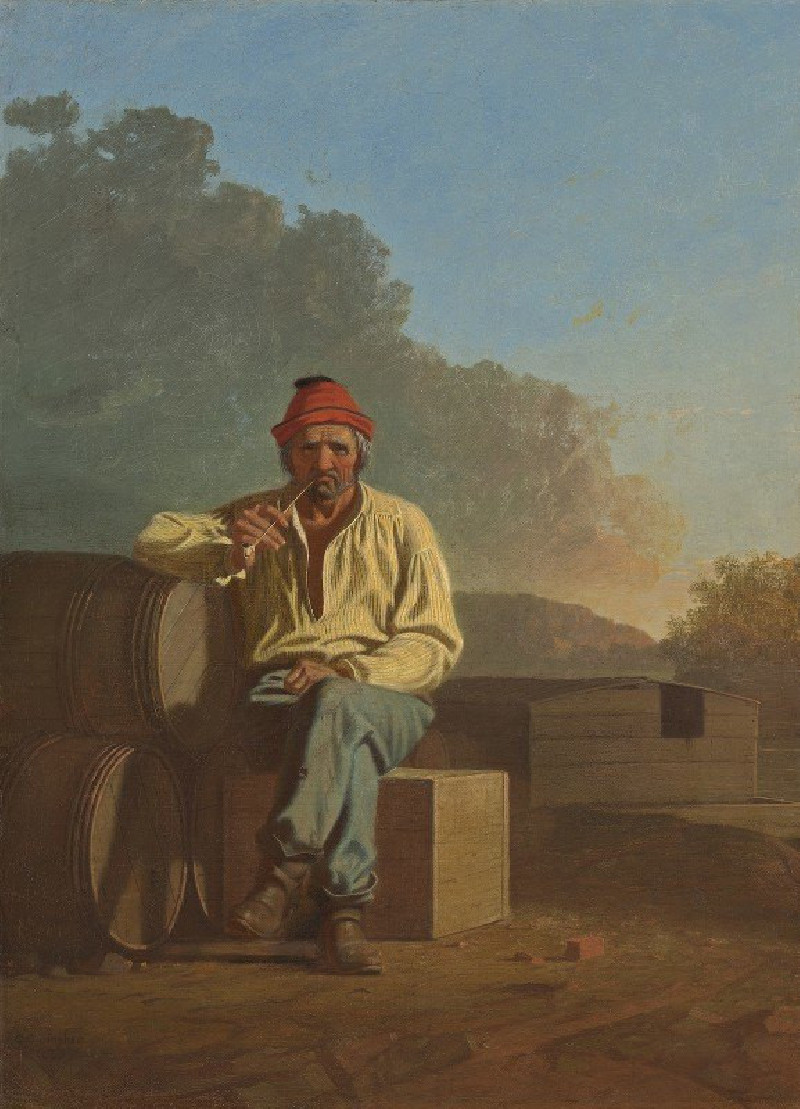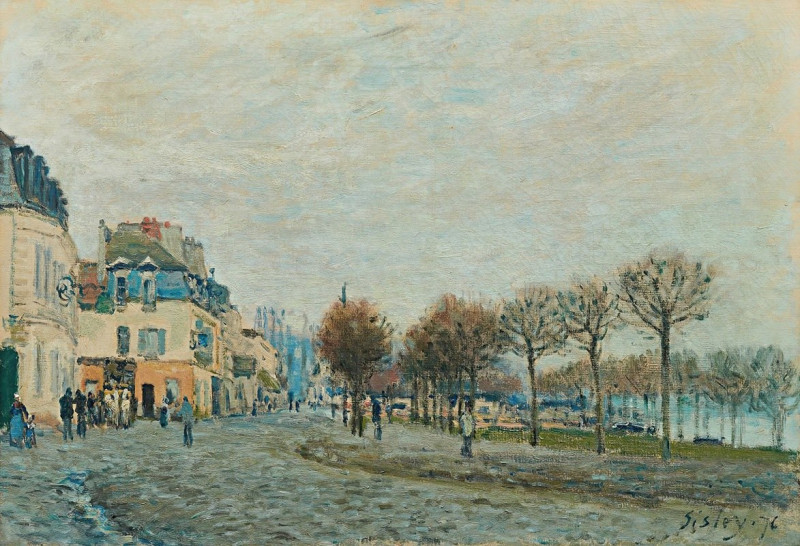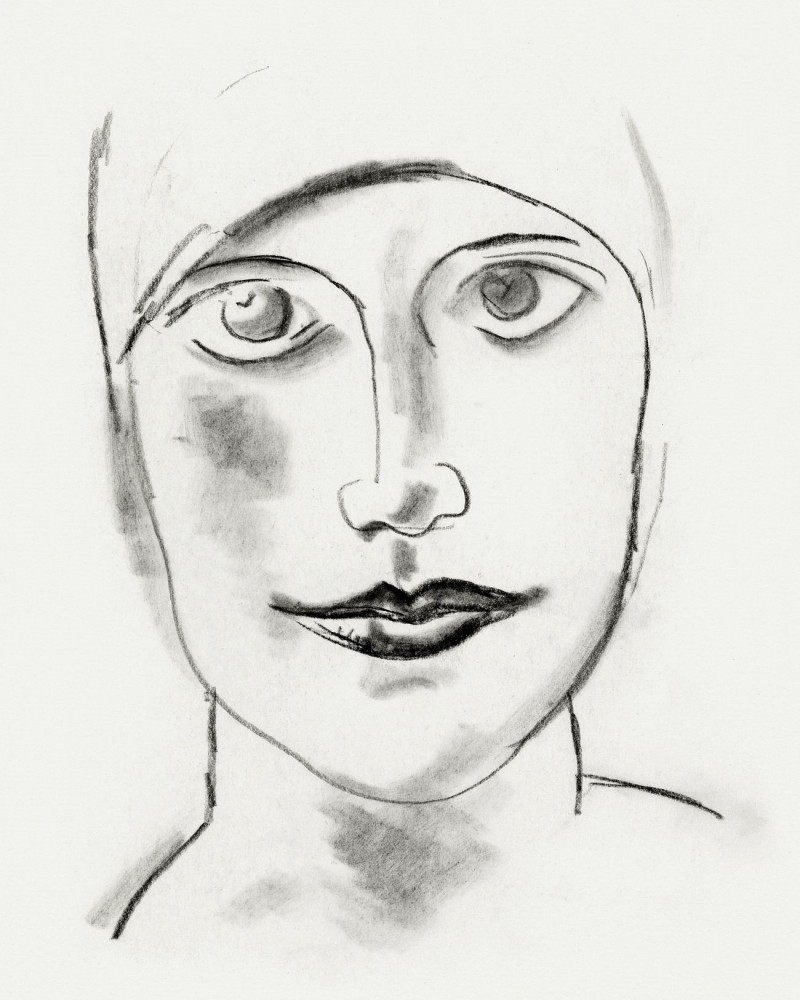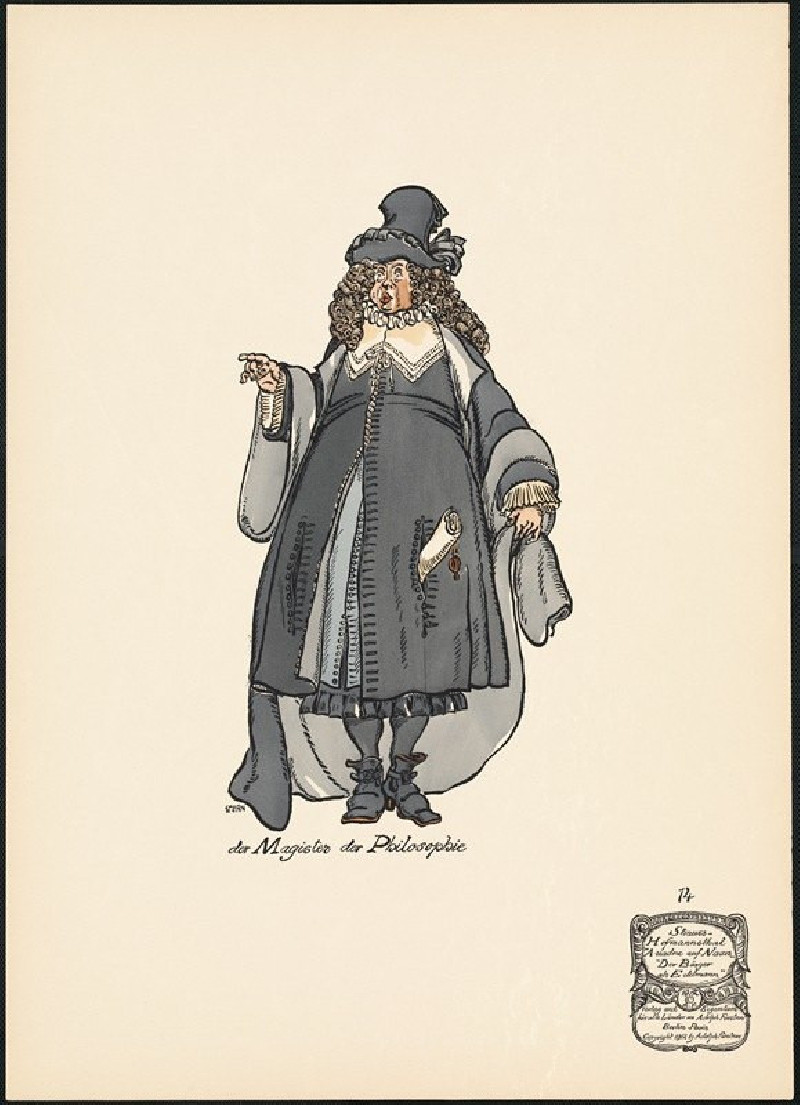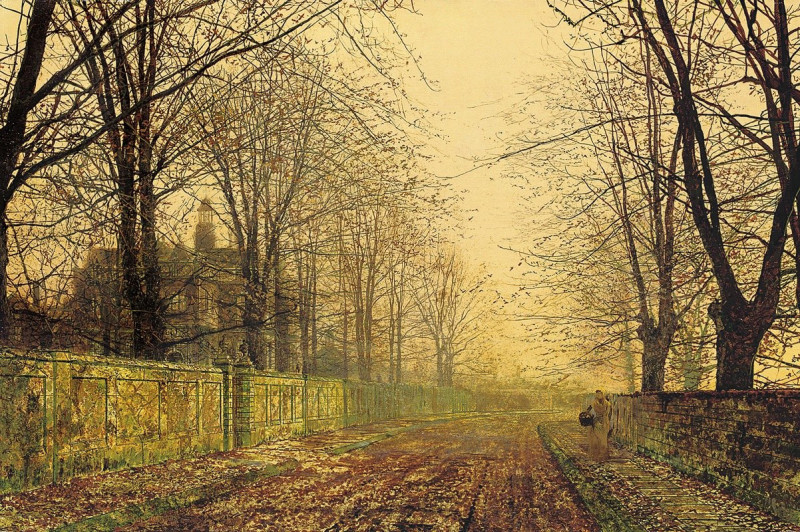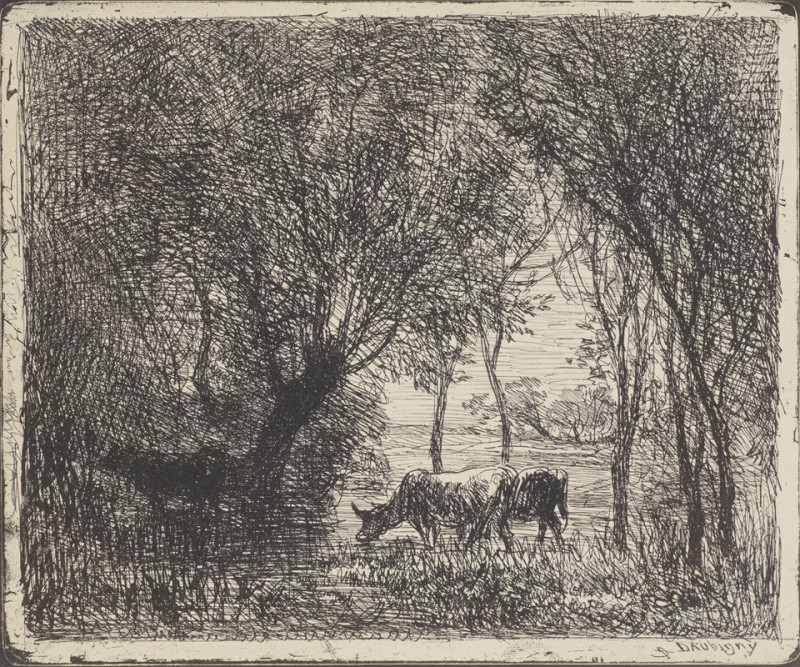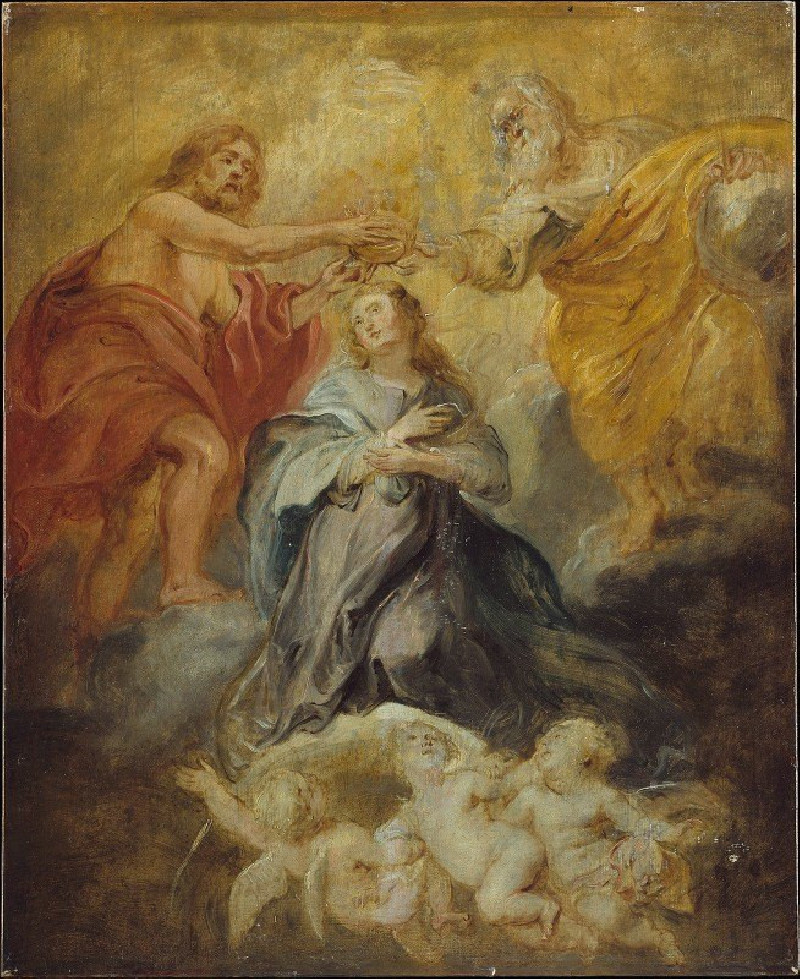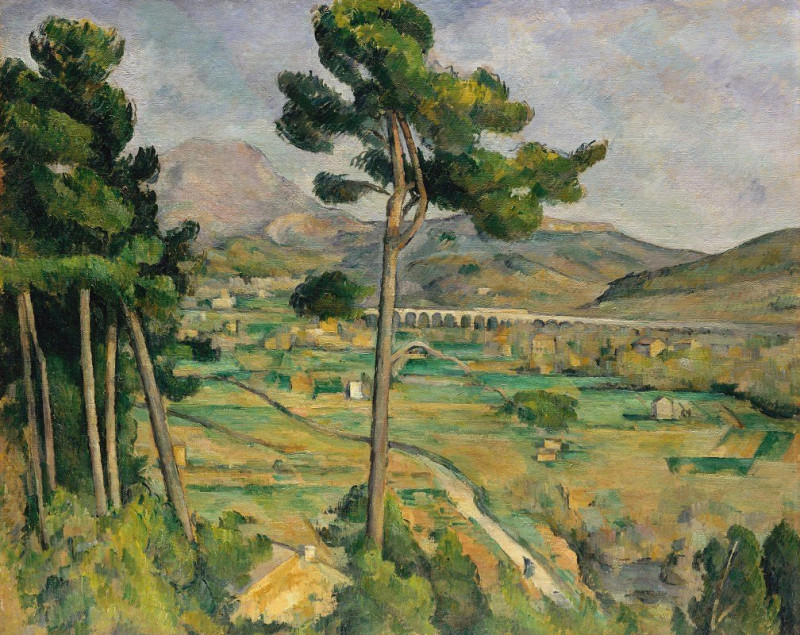Avenue of Poplars
Technique: Giclée quality print
Recommended by our customers
More about this artwork
Olga Wisinger-Florian's "Avenue of Poplars" is a lively and textural impressionist painting that invites the viewer into a rustic, yet dynamic landscape scene. The painting portrays a row of towering poplar trees standing along a pathway, their trunks dark and prominently textured against a tumultuous sky. The trees, depicted with thick and hurried brush strokes, emerge from a lush undergrowth of vibrant green foliage, creating a sense of depth and natural vitality.The backdrop is a dramatic, swirling sky, rendered in shades of gray and white, that seems to echo the untamed energy of an impending storm. This atmospheric effect not only highlights the central motifs—the poplars—but also complements the earthy tones of the path and the vivid greens of the grass."Avenue of Poplars" captures a moment frozen in time, with a balanced play between light and shadow that subtly hints at the transient quality of nature. Wisinger-Florian’s use of color and texture emphasizes the emotive power of the landscape, making this painting a profound statement on the beauty and wildness of the natural world.
Delivery
Returns
Olga Wisinger-Florian was an Austrian impressionist painter, mainly of landscapes and flower still life. She was a representative of the Austrian "Stimmungsimpressionismus [de]" (Mood Impressionism), a loose group of Austrian impressionist painters that was considered avant-garde in the 1870s and 1880s.

